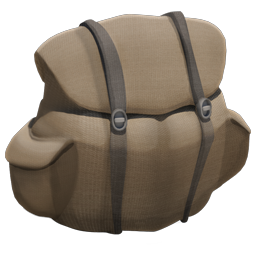Sistema de obtención aleatoria de objetos
| Esta página está en proceso de ser traducida al español. Si hablas español, publica una versión traducida en la discusión o comunícate con quienes hayan contribuido a la página (observando el historial de la página). |
| « | Sí. Me gusta esta nueva arma.
Haz clic para escuchar
— Heavy
|
» |
El sistema de obtención aleatoria de objetos es un sistema que permite al jugador obtener armas, sombreros, u objetos misceláneos mientras juega y consigue logros en Team Fortress 2. Fue introducido por primera vez con la Actualización Sniper vs. Spy.
Índice
Historia
El antiguo sistema
Manteniendo los Hitos de Scout, Pyro, Heavy y Medic, Valve implementó el sistema de obtención aleatoria de objetos para mantener el equilibrio entre clases en el caso de una actualización de clase. Este sistema fue añadido al juego como parte de la Actualización Sniper vs. Spy.
Valve calculó el tiempo medio de juego de un jugador de Team Fortress 2 , después se ajustó con un tiempo desconocido, que fue utilizado como marcador o punto de ajuste. Cada vez que un jugador acumulaba 25 minutos de juego, éste elegía aleatoriamente una opción. Si el jugador tenía suerte (25% de probabilidad) conseguía un objeto aleatorio. Si el jugador no tenía tanta suerte, no conseguía ningun objeto. Cada 4 horas, 17 minutos y 10 segundos, habia una posibilidad extra de 1 entre 28 de conseguir un sombrero. El tiempo medio para conseguir un objeto era de 1 hora y 40 minutos.
When first released, item drops would only occur if players were connected to the Steam Community. If the player was not signed into his or her friends list, or if Valve was performing maintenance on the Steam Community, the player would not receive item drops during that time. Valve changed this system at a later date, and item drops now occur for those who are not signed into the Steam Community.
Current System
On April 20, 2010, the item drop system was changed.[1] Instead of rolling randomly at intervals to see if you got an item drop, the system rolls to determine when your next item drop will occur. With this change, players are guaranteed to find items at regular intervals. Under the previous system players could have unlucky streaks, where they didn't find any items for long periods of time. The new system has removed this possibility. The drop rate was also increased, however players have a limited amount of playtime per week when they can receive drops. Playing beyond that amount won't find any more items but unused time rolls over to the following week.
The maximum amount of items you can get is not known, however it can't exceed 56 because the day drop limit is 8. On average a player gets ~6 items a week. [2] The system resets each player's item drop count around each Wednesday, Pacific standard time where Valve is located.
The dropped items are stored in the backpack after the player's death, after a trade has been done or if the Mann Co. Store is visited.
Achievement Milestones
On April 29, 2008, Valve unveiled a set of three unlockable weapons as part of their Gold Rush Update. These weapons were unlocked by completing a set number of achievements, resulting in an achievement milestone. There were three achievement milestones in all, with each successive one requiring more achievements. Once each milestone was unlocked the player received the set weapon that came with that achievement milestone. This requirement was subsequently reduced to stop players grinding just to get the new unlocks.
On May 21, 2009, Valve implemented a new system of random drops for unlockable items and discontinued the milestone system. Valve soon fell back to the Achievement Milestones coupled with the item drop system for the Sniper and Spy weapons in the the May 29, 2009 Patch. This milestone system has since been used in the WAR! Update and also appeared in the Engineer update.
Advantages and Disadvantages
A positive aspect of the system is that it allows new and old players alike to earn unlockable weapons by investing play time. It allows players to play as any class, since as long as they are racking up game-time, the player is eligible for an item drop.
Many players received unwanted duplicates. This was dealt with by the introduction of the Crafting system, and later by the Trading system, allowing players to trade all but a few items with each other.[3]
Despite the new systems, Idling still exists. However, it is now possible using the offline mode (use of the -textmode game launch parameter combined with -novid and -nosound to disable video and audio processing respectively,) leaving server providers free to provide a gaming experience.
Backpack
The backpack is where dropped items are stored, and can be used by players to equip items for play in the Loadout menu. The backpack has a limited capacity of 200 slots, so it may be necessary to destroy or craft duplicates in order to make room for new weapons or items. The capacity was originally a single page that stored 50 items. The capacity was doubled to 2 pages, a capacity of 100 items, on September 15, 2009. It was doubled again to 4 pages, a capacity of 200 items, on September 30, 2010 with the release of the Actualizacion Mann-Conomy.
External Links
- TF2 Official Blog – May 22, 2009 – "Every one of you deserves a medal!" by Erik Johnson, explaining in detail the reasoning behind the change in the item drop system.
